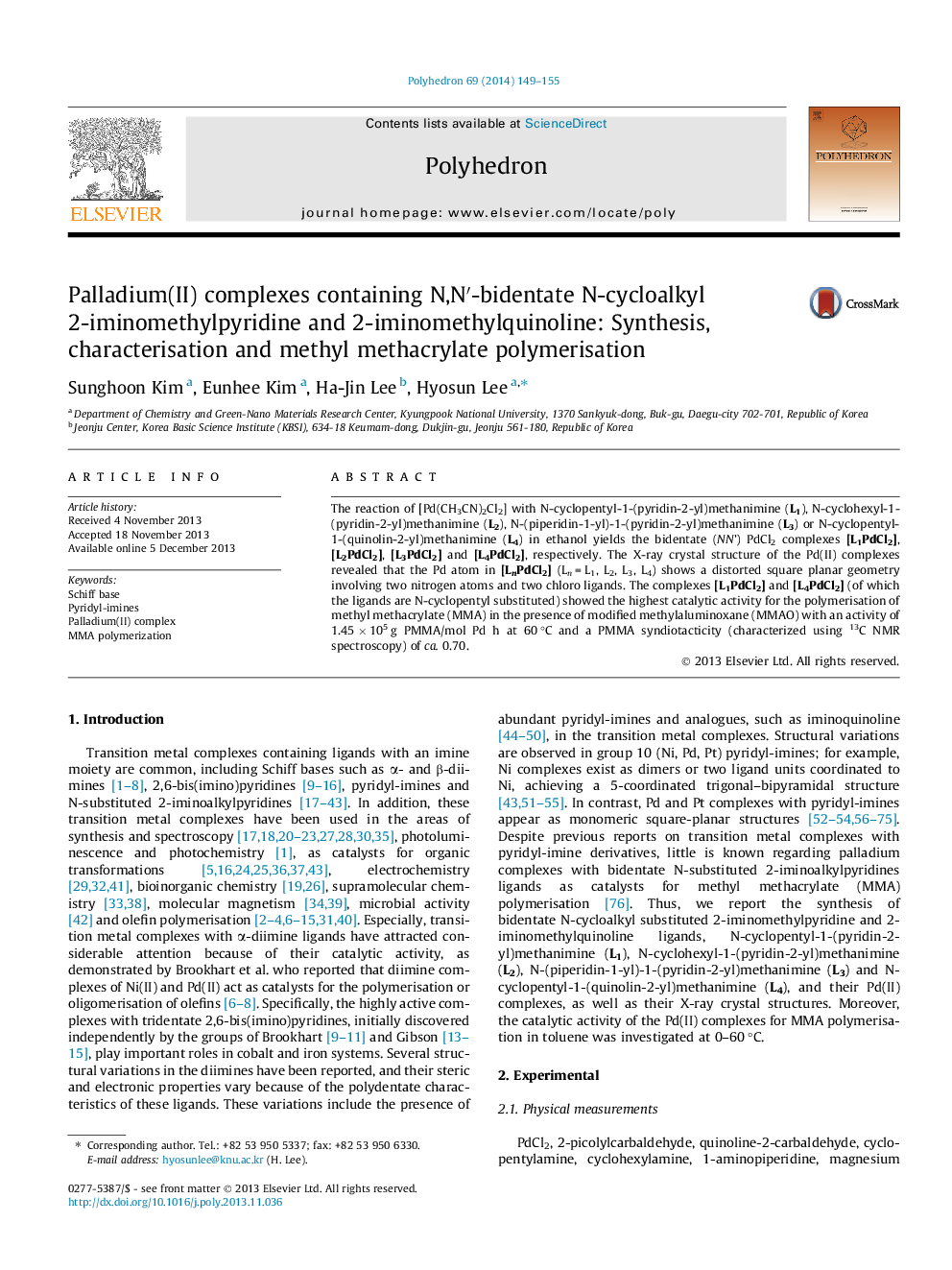| Article ID | Journal | Published Year | Pages | File Type |
|---|---|---|---|---|
| 1338072 | Polyhedron | 2014 | 7 Pages |
The reaction of [Pd(CH3CN)2Cl2] with N-cyclopentyl-1-(pyridin-2-yl)methanimine (L1), N-cyclohexyl-1-(pyridin-2-yl)methanimine (L2), N-(piperidin-1-yl)-1-(pyridin-2-yl)methanimine (L3) or N-cyclopentyl-1-(quinolin-2-yl)methanimine (L4) in ethanol yields the bidentate (NN’) PdCl2 complexes [L1PdCl2], [L2PdCl2], [L3PdCl2] and [L4PdCl2], respectively. The X-ray crystal structure of the Pd(II) complexes revealed that the Pd atom in [LnPdCl2] (Ln = L1, L2, L3, L4) shows a distorted square planar geometry involving two nitrogen atoms and two chloro ligands. The complexes [L1PdCl2] and [L4PdCl2] (of which the ligands are N-cyclopentyl substituted) showed the highest catalytic activity for the polymerisation of methyl methacrylate (MMA) in the presence of modified methylaluminoxane (MMAO) with an activity of 1.45 × 105 g PMMA/mol Pd h at 60 °C and a PMMA syndiotacticity (characterized using 13C NMR spectroscopy) of ca. 0.70.
Graphical abstractThe complexes [LnPdCl2] (Ln = L1, L2, L3, L4), where, for example, L1 is N-cyclopentyl-1-(pyridin-2-yl)methanimine, were synthesized and characterized by X-ray crystallography. The results showed that the coordination geometry around the Pd(II) centre is distorted square-planar. The catalytic activities of [L1PdCl2] and [L4PdCl2] toward MMA polymerisation under MMAO were high at 60 °C.Figure optionsDownload full-size imageDownload as PowerPoint slide
